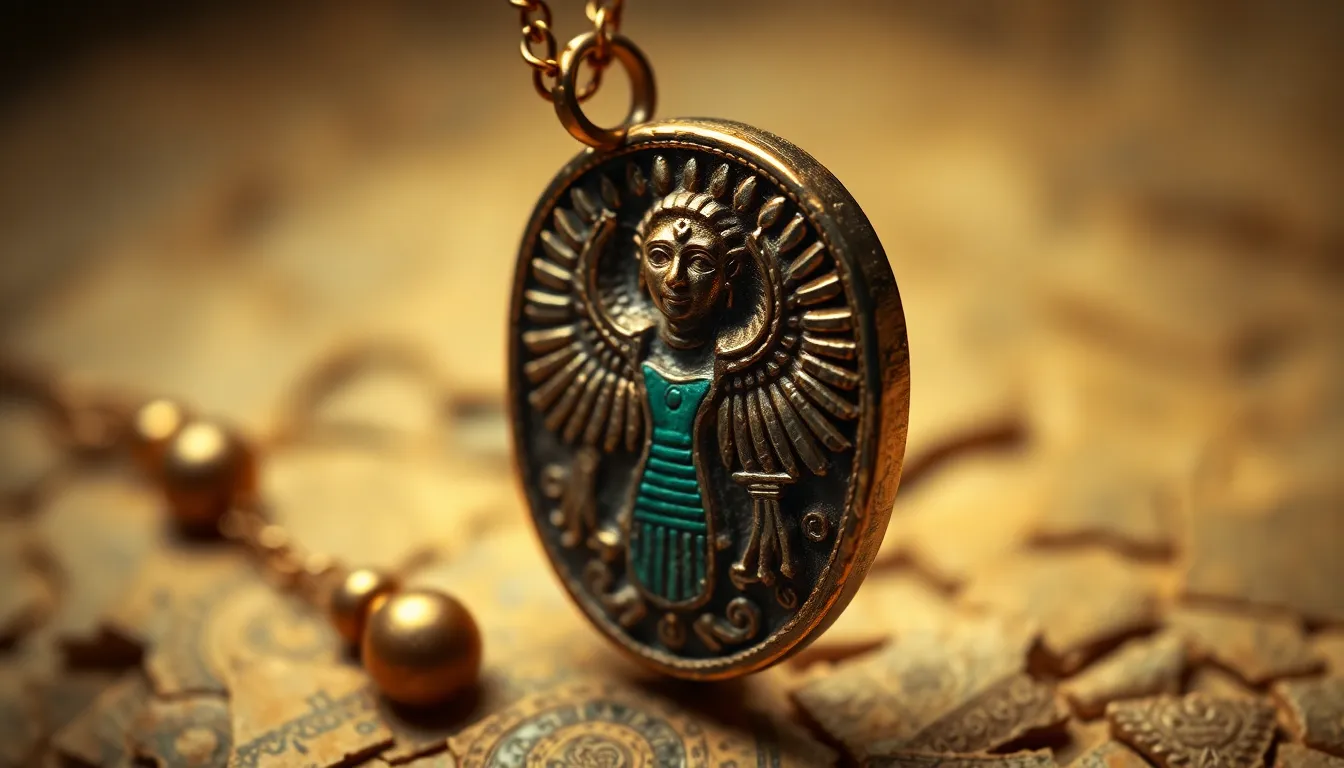The Protective Magic of Amulets: How They Were Linked to Deities
I. Introduction
Amulets have been an integral part of human culture for thousands of years, serving as symbols of protection, luck, and spiritual connection. Historically, they have been crafted from a variety of materials, including stones, metals, and organic substances, each chosen for its believed protective qualities. The use of amulets transcends geographical boundaries and cultural differences, reflecting deep-rooted beliefs in the supernatural and the divine.
This article aims to explore the intricate relationship between amulets and deities, highlighting the protective magic attributed to these artifacts throughout history. We will delve into the historical context of amulets, their association with various deities, and the cultural practices surrounding their use.
II. The Historical Context of Amulets
Throughout ancient civilizations, amulets were widely utilized for their perceived protective powers. From the pharaohs of Egypt to the gladiators of Rome, these objects have played a vital role in spiritual and daily life.
- Ancient Egypt: Amulets were often crafted from faience, gemstones, and precious metals, adorned with symbols like the Eye of Horus for protection against evil.
- Mesopotamia: Clay and stone amulets frequently featured inscriptions of prayers or the names of deities to invoke protection.
- Greco-Roman Era: Talismans were common, believed to hold the power of various gods and spirits, often worn as jewelry.
The designs and materials of amulets have evolved over time, reflecting changes in cultural beliefs and artistic styles. For instance, the transition from simple clay tokens in ancient times to intricate gold jewelry in later periods illustrates the growing complexity of their symbolic meanings.
Diverse cultures have also exhibited unique practices concerning amulet usage, influenced by their specific spiritual beliefs and societal norms. This cultural variability highlights the universal human desire for protection and guidance from higher powers.
III. Understanding the Concept of Protective Magic
Protective magic, as a concept, refers to the belief that certain objects, rituals, or practices can shield individuals from harm or misfortune. Across various cultures, protective magic is often intertwined with spirituality and religion.
- Belief Systems: The efficacy of amulets is often amplified by the belief systems of the individuals who wear them. The stronger the belief in the protective power of the amulet, the more potent its perceived magic.
- Psychological Impact: Wearing an amulet can provide emotional reassurance, fostering a sense of security and well-being, which in turn can influence a person’s actions and decisions.
IV. The Link Between Amulets and Deities
Amulets frequently serve as symbols of divine protection, embodying the presence and power of specific deities. In many traditions, these objects are believed to act as intermediaries between the divine and the mortal realms.
- Divine Protection: Many amulets are inscribed with the names or images of deities, such as the Egyptian goddess Isis, who was invoked for protection during childbirth.
- Deities Associated with Amulets: Different cultures associate various deities with specific amulets. For example, in Hinduism, the god Ganesha is often invoked for success and protection through the use of particular charms.
- Rituals: The creation and consecration of amulets can involve rituals that honor the associated deities, further enhancing their protective qualities.
V. Types of Amulets and Their Significance
Amulets can be classified into various types, each with its distinct significance and protective qualities. Some of the most common types include:
- Talismans: Objects believed to possess inherent magical properties, often used for attracting good fortune.
- Charms: Simple objects or inscriptions meant to ward off evil or misfortune.
- Religious Symbols: Items such as crosses, stars of David, or crescent moons that signify faith and provide spiritual protection.
Throughout history, notable amulets have emerged, such as the Scarab of ancient Egypt, symbolizing rebirth and protection. Such amulets not only served practical purposes but also reflected the societal values and beliefs of their time.
VI. Cultural Practices Surrounding Amulets
The creation and consecration of amulets vary widely across cultures, often steeped in tradition and ritual.
- Creation: In many cultures, amulets are handmade, often by skilled artisans or spiritual leaders who infuse them with protective energy through prayers or rituals.
- Daily Use: Many individuals wear amulets continuously or during significant life events, such as weddings or births, to invoke divine protection.
- Spirituality and Religion: Amulets play a significant role in various spiritual practices, serving as focal points for meditation or prayer.
VII. Modern Interpretations and Uses of Amulets
In contemporary society, there has been a revival of interest in amulets, often seen as a blend of traditional beliefs with modern practices.
- Contemporary Appeal: Many people are drawn to amulets for their aesthetic value, as well as their perceived spiritual benefits.
- Integration of Beliefs: Modern amulet practices often incorporate traditional symbols and meanings, allowing individuals to connect with their cultural heritage.
- Personal Stories: Numerous testimonials exist from individuals who claim to have experienced positive changes in their lives after wearing specific amulets, reinforcing the belief in their protective powers.
VIII. Conclusion
In summary, amulets hold a significant place in human history, serving as powerful symbols of protection linked to various deities. Their historical context, cultural practices, and the psychological impact they have on individuals illustrate their enduring relevance.
The protective magic of amulets continues to resonate in the modern world, where many seek solace and security in these time-honored artifacts. As we reflect on the connection between amulets and the divine, it becomes clear that the desire for protection and guidance is a universal aspect of the human experience, transcending time and culture.




